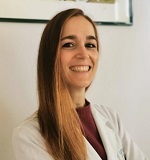ESTRO 2023 Biology Track Report
Chair: Randi Syljuåsen, Norway
Co-chair: Pelagia Tsoutsou, Switzerland
Speakers:
Inigo Martinez-Zubiaurre, Norway
Sandeep Burma, USA
Marleen Ansems, The Netherlands
Senescence is a phenomenon in which cancer cells enter a state of permanent cell-cycle arrest. The symposium addressed the issue of microenvironmental changes that are provided by radiation-induced senescence, the related risks of increased tumour growth and recurrence, and emerging strategies to counter these negative effects.
Inigo Martinez-Zubiaurre focused on the role that cancer-associated fibroblasts (CAFs) play in radiotherapy outcomes. This is still poorly understood. In preclinical models, there are controversial data about irradiated CAFs that seem to confer radiation resistance or, on the contrary, pro-tumourigenic effects. In vitro and in vivo studies were presented that used different cell lines (lung, colon and pancreatic carcinoma). In vitro CAFs are highly resistant to treatment; however, radiotherapy induces phenotypical and functional changes (senescence) and, in the presented studies, CAFs did not seem to become more tumourigenic after irradiation, nor did they radioprotect cancer cells. In-vivo studies evidenced a significant reduction in the number of CAFs after irradiation only in an in-vivo model of pancreatic cancer. Very interesting data were obtained from patients treated with radiochemotherapy for cervical cancer. The analysis of cancer specimens that had been obtained at diagnosis and again after treatment with 10Gy showed that the radiotherapy had induced an increase in the numbers of certain subtypes of fibroblasts.
Sandeep Burma illustrated the ways in which senescence promotes the recurrence of glioblastoma (GBM) after radiotherapy and the potential utility of adjuvant senolytic therapies. Pre-irradiation of the mouse brain promotes the growth of GL261 glioma cells and these tumours appear more invasive. Irradiation triggers senescence of astrocytes and induces the growth of tumour-promoting senescence-associated secretory phenotypes (SASPs). Senescent astrocytes upregulate several SASP genes, including that for hepatocyte growth factor, which activates Met. Met signalling is associated with therapeutic resistance in GBM and proliferation, scattering and invasion of tumour cells. Thus, the elimination of senescent cells through the use of senolytic treatments (for instance, ABT263) can improve GBM therapy, as shown in mouse models. Senescent glioma cells upregulate interleukin-6 (IL6), which activates the Janus kinase signal transducer and activator of transcription (JAK-STAT) pathway and therefore promotes tumour-cell proliferation and radiation resistance. The use of antibodies that target IL6 or the IL6 receptor can neutralise this effect, as was shown through the addition of conditioned media from senescent GBM cells to non-senescent, non-irradiated GBM cells. Thus, the use of adjuvant senolytic therapy could eliminate senescent stromal cells as well as senescent tumour cells, both of which might be driving GBM recurrence.
The effect of radiotherapy on CAF function in head and neck squamous cell carcinoma (HNSCC) was discussed by Marleen Ansems. The tumour microenvironment of advanced-stage HNSCC can consist of up to 80% CAFs, but their exact role in tumourigenesis and radiation response is unknown.
In vitro irradiation of CAFs isolated from HNSCC did not induce cell death, but it reduced cell growth, induced DNA damage and increased cell size. These effects are related to radiation-induced senescence, as confirmed by staining for β-galactosidase, a marker used to identify cellular senescence. After in vitro irradiation at 0, 6 and 18Gy, CAF supernatant was collected and added to tumour cells. It was observed that the presence of HNSCC-derived CAFs increased the amount of cancer-cell migration and affected cytokine secretion by peripheral blood mononuclear cells, but radiation did not have a major impact. Results from ongoing experiments on in-vivo and 3D organoid models are expected.

Monica Mangoni
Associate professor in radiation oncology
University of Florence
Florence, Italy